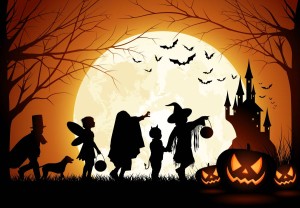To most of us the pumpkin is a traditional symbol of Halloween. Even before we are old enough to carve our own jack-o’-lanterns, we depict them in our Halloween pictures with black cats, witches and ghosts and even tape replicas cut out of orange paper to the windows.
We can look back more than 2,000 years to the origins of Halloween. The Celtic people, who then lived in what is now Great Britain, Ireland and Northern France, looked at Oct. 31 as the last day of the year. It marked the end of summer and the beginning of winter, when even the sun seemed to be dying, leaving the world cold, dark and decaying.
It was on this night that people honored their god of death, Samhain. They extinguished their hearth fires, leaving their homes cold and dark, symbolically imitating nature’s pattern, and gathered at the sacred bonfires built by the Druids, their priests and leaders. At the celebration’s end, each family carried home a torch from the bonfire to relight its own fire, symbolizing the new year and the renewal of life, and perhaps to scare away evil spirits and light the way for ghosts, the souls of the dead, who they believed Samhain permitted to return to Earth for just this one night.
Following the conquest of the Celts by the Romans in 43 A.D., the Romans own festival to honor the dead and Pomona, their goddess of fruit trees, were combined with the Celtic ceremonies. It is likely that apples became associated with the holiday at this time. The Anglo-Saxons replaced the Romans as rulers of England in the fifth to seventh centuries. During this time Christianity spread throughout the land and some of its rites were combined with existing customs.
In the ninth century, the Christians established Nov. 1 as All Saints’ Day. The traditions of Oct. 31 were incorporated as part of this holy day, being celebrated as the Eve of All Hallows. (Hallow is the old English word for a holy person or saint.) The name for the Oct. 31 celebration eventually was contracted to Halloween. Soul cakes were eaten to mark the occasion. Poor people went “souling,” asking for soul cakes in return for saying prayers for the dead. People carved lanterns out of large beets and turnips and left candles burning in them to guide the souls of the dead to their former homes. Over time all of these observances became secularized and celebrated on Halloween.
These traditions were adapted by people from the Celtic lands when they settled in North America. “Souling” became “trick or treat,” with children wearing costumes representing supernatural spirits, such as ghosts and witches. The pumpkin replaced beets and turnips as a more suitable lantern to guide the spirits. The eerie orange light from the pumpkins led to its being called “jack-o’-lantern,” the colloquial English name for the mysterious flame-like phosphorescence that flits over marshy ground when the gases of decaying vegetation spontaneously ignite.
